Linjie Deng
Unified Chinese License Plate Detection and Recognition with High Efficiency
May 07, 2022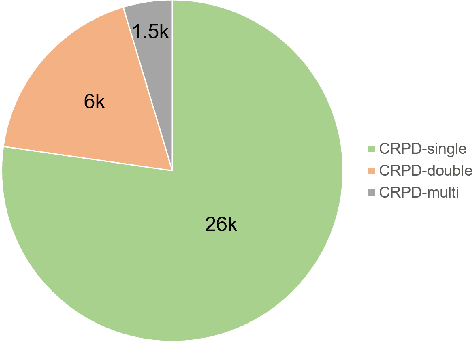
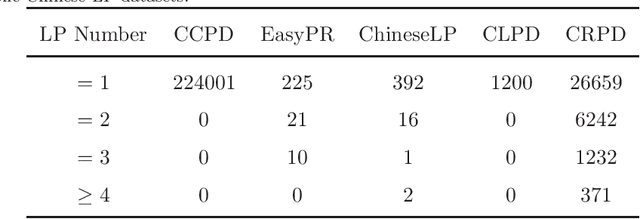
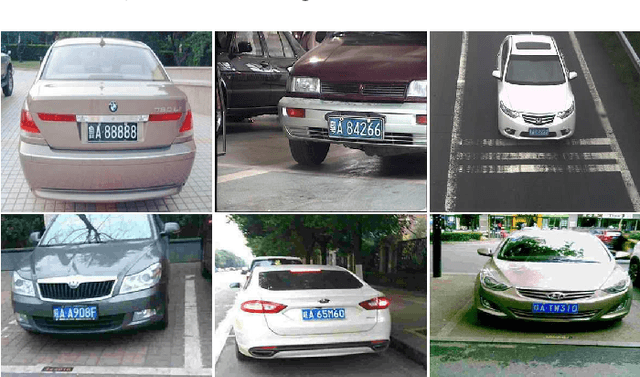
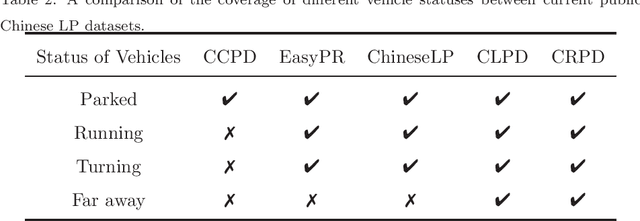
Abstract:Recently, deep learning-based methods have reached an excellent performance on License Plate (LP) detection and recognition tasks. However, it is still challenging to build a robust model for Chinese LPs since there are not enough large and representative datasets. In this work, we propose a new dataset named Chinese Road Plate Dataset (CRPD) that contains multi-objective Chinese LP images as a supplement to the existing public benchmarks. The images are mainly captured with electronic monitoring systems with detailed annotations. To our knowledge, CRPD is the largest public multi-objective Chinese LP dataset with annotations of vertices. With CRPD, a unified detection and recognition network with high efficiency is presented as the baseline. The network is end-to-end trainable with totally real-time inference efficiency (30 fps with 640p). The experiments on several public benchmarks demonstrate that our method has reached competitive performance. The code and dataset will be publicly available at https://github.com/yxgong0/CRPD.
Focus-Enhanced Scene Text Recognition with Deformable Convolutions
Sep 23, 2019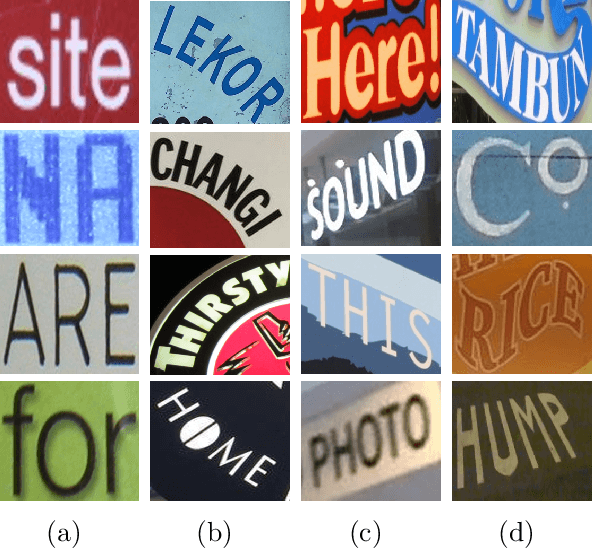


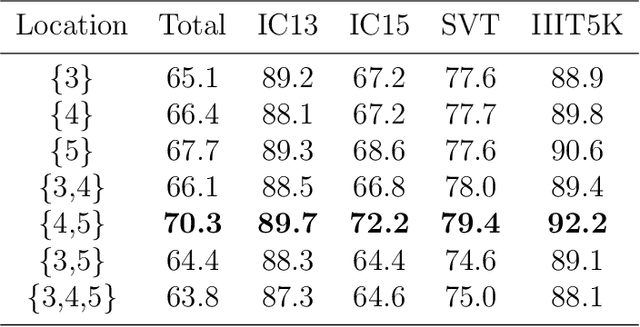
Abstract:Recently, scene text recognition methods based on deep learning have sprung up in computer vision area. The existing methods achieved great performances, but the recognition of irregular text is still challenging due to the various shapes and distorted patterns. Consider that at the time of reading words in the real world, normally we will not rectify it in our mind but adjust our focus and visual fields. Similarly, through utilizing deformable convolutional layers whose geometric structures are adjustable, we present an enhanced recognition network without the steps of rectification to deal with irregular text in this work. A number of experiments have been applied, where the results on public benchmarks demonstrate the effectiveness of our proposed components and shows that our method has reached satisfactory performances. The code will be publicly available at https://github.com/Alpaca07/dtr soon.
STELA: A Real-Time Scene Text Detector with Learned Anchor
Sep 23, 2019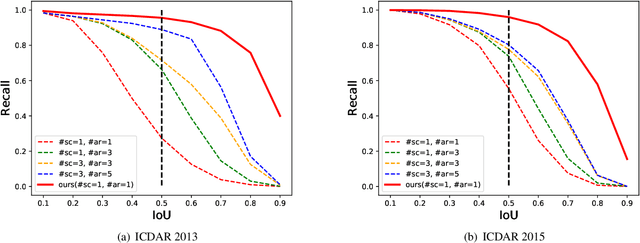
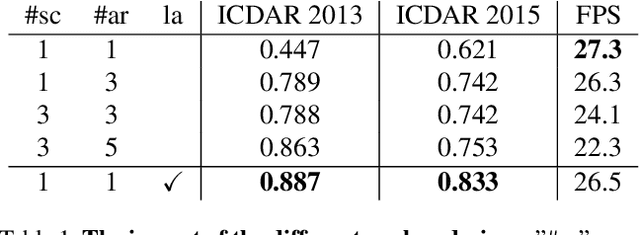


Abstract:To achieve high coverage of target boxes, a normal strategy of conventional one-stage anchor-based detectors is to utilize multiple priors at each spatial position, especially in scene text detection tasks. In this work, we present a simple and intuitive method for multi-oriented text detection where each location of feature maps only associates with one reference box. The idea is inspired from the twostage R-CNN framework that can estimate the location of objects with any shape by using learned proposals. The aim of our method is to integrate this mechanism into a onestage detector and employ the learned anchor which is obtained through a regression operation to replace the original one into the final predictions. Based on RetinaNet, our method achieves competitive performances on several public benchmarks with a totally real-time efficiency (26:5fps at 800p), which surpasses all of anchor-based scene text detectors. In addition, with less attention on anchor design, we believe our method is easy to be applied on other analogous detection tasks. The code will publicly available at https://github.com/xhzdeng/stela.
Generating Text Sequence Images for Recognition
Jan 21, 2019



Abstract:Recently, methods based on deep learning have dominated the field of text recognition. With a large number of training data, most of them can achieve the state-of-the-art performances. However, it is hard to harvest and label sufficient text sequence images from the real scenes. To mitigate this issue, several methods to synthesize text sequence images were proposed, yet they usually need complicated preceding or follow-up steps. In this work, we present a method which is able to generate infinite training data without any auxiliary pre/post-process. We tackle the generation task as an image-to-image translation one and utilize conditional adversarial networks to produce realistic text sequence images in the light of the semantic ones. Some evaluation metrics are involved to assess our method and the results demonstrate that the caliber of the data is satisfactory. The code and dataset will be publicly available soon.
Detecting Multi-Oriented Text with Corner-based Region Proposals
Apr 08, 2018



Abstract:Previous approaches for scene text detection usually rely on manually defined sliding windows. In this paper, an intuitive region-based method is presented to detect multi-oriented text without any prior knowledge regarding the textual shape. We first introduce a Corner-based Region Proposal Network (CRPN) that employs corners to estimate the possible locations of text instances instead of shifting a set of default anchors. The proposals generated by CRPN are geometry adaptive, which makes our method robust to various text aspect ratios and orientations. Moreover, we design a simple embedded data augmentation module inside the region-wise subnetwork, which not only ensures the model utilizes training data more efficiently, but also learns to find the most representative instance of the input images for training. Experimental results on public benchmarks confirm that the proposed method is capable of achieving comparable performance with the state-of-the-art methods. On the ICDAR 2013 and 2015 datasets, it obtains F-measure of 0.876 and 0.845 respectively. The code is publicly available at https://github.com/xhzdeng/crpn
 Add to Chrome
Add to Chrome Add to Firefox
Add to Firefox Add to Edge
Add to Edge